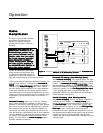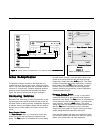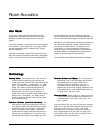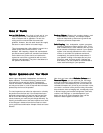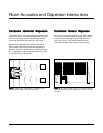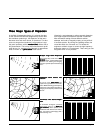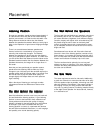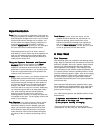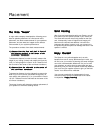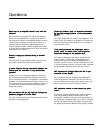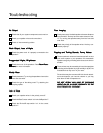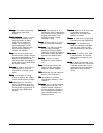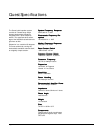
Page 20
Quest User's Manual
Placement
The X-tra "Tweek"The X-tra "Tweek"
The X-tra "Tweek"The X-tra "Tweek"
The X-tra "Tweek"
A major cable company developed the following proce-
dure for speaker placement. As a final test of exact
placement, use these measurements for your speakers
placement, and see what can happen to the ultimate
enhancement of your system's performance.
The procedure consists of two basic measurements:
1) distance from the front wall (wall in front of1) distance from the front wall (wall in front of
1) distance from the front wall (wall in front of1) distance from the front wall (wall in front of
1) distance from the front wall (wall in front of
the listening position) to the center of thethe listening position) to the center of the
the listening position) to the center of thethe listening position) to the center of the
the listening position) to the center of the
curvilinear transducer.curvilinear transducer.
curvilinear transducer.curvilinear transducer.
curvilinear transducer.
To determine distance from the front wall, measure the
height of your ceiling (inches) and multiply the figure by
.618 (i.e. ceiling height in inches X .618 = distance from
the front wall to the center of the curvilinear transducer).
2) distance from the side-walls to the center of2) distance from the side-walls to the center of
2) distance from the side-walls to the center of2) distance from the side-walls to the center of
2) distance from the side-walls to the center of
the curvilinear transducer.the curvilinear transducer.
the curvilinear transducer.the curvilinear transducer.
the curvilinear transducer.
To determine distance from the side-walls, measure the
width of your room (inches) and divide the figure by 18,
next multiply the quotient by 5 (i.e. (room width in inches/
18) X 5 = distance from the side-walls to the center of the
curvilinear transducer).
These two formulas will determine optimum placement of
your speakers to minimize standing waves.
Solid FootingSolid Footing
Solid FootingSolid Footing
Solid Footing
After living and experimenting with your Quests, you will
then want to use the spikes included in your owners kit.
The Quest will become more firmly planted on the floor
and, consequently, bass will tighten and imaging will
become more coherent and detailed. It is best not to
implement the spikes, however, until you are secure in
the positioning as the spikes can damage the floors if the
speaker is moved.
Enjoy YourselfEnjoy Yourself
Enjoy YourselfEnjoy Yourself
Enjoy Yourself
The Quest is a very refined speaker and, as such,
benefits from care in set-up. With these tips in mind, you
will find, over your months of listening, that small changes
can result in demonstrable differences. As you live with
your speakers, do not be afraid to experiment with their
positioning until you find the optimal relationship between
your room and your speaker system to give you the best
results. Your efforts will be rewarded.
You are now armed with the fundamentals of room
acoustics and the specific fundamentals of the Quest
loudspeaker.
Happy listening! Happy listening!
Happy listening! Happy listening!
Happy listening!



